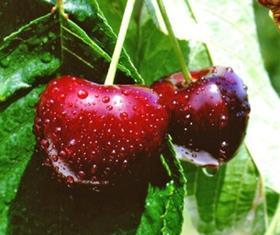
Cherries have been one of the success stories of the fresh produce category in recent years. Once little more than a niche crop that few people considered more than an impulse purchase, now a combination of longer and more consistent supply and savvy marketing has helped drive sustained sales growth.
Until recently it was one of the last crops that had times of genuine unavailability, but growers have been working hard to extend the shoulders of the seasons and bridge the gap. While this year’s UK season is up to three weeks late on blossom, suppliers say the crop often “catches up” and similar delays on shelves do not always follow. The current thinking is that shops will be fully stocked around mid-July.
“The delay in flower is not always replicated in the fruit being harvested as cherries take between 60-90 days to produce fruit from the point of breaking bud, so warmer than average temperatures over the coming weeks could bring the crop back into line,” explains Total Cherry’s Jon Clark.
Indications are for a good-quality crop, with the winter chill having provided well for the trees and a decent forecast for the coming weeks. With one of the broadest north-south production areas in the world – UK growers produce cherries from Kent via Wales and all the way up to Scotland – the country has enviable potential for further season extension, believes Nick Marston, managing director of Berry Gardens and spokesman for British Cherries and Plums. There are increased plantings on late-season sites, with varieties such as Kordia, Skeena and Penny proving popular with growers, he points out.
The UK crop is likely to be around 3,500 tonnes this year, according to Clark, compared to just 1,000t in the disastrous summer of 2012.
Away from the UK, California is expecting potentially its largest-ever crop this season, reports Richard Isaacs, who is department manager for the cherry and stonefruit business at Univeg Katopé UK. Growers have been investing in early production and a lot of trees are now reaching full maturity. There will be a substantial pre-Bing peak in mid-May which will roll right into maincrop Bings, he says.
Growers have pushed the season earlier with a range of varieties, including Brooks, Coral Champagne, Sequoia, Chelan, Tulare and Garnet, with picking already having begun at the end of April.
And the Californian enthusiasm for the fruit is being replicated by growers internationally, Isaacs says. “All around the world where people can grow cherries they are doing so. Over the past five to 10 years people have been grubbing other orchards and investing in cherries.”
Univeg’s main supply for the early northern hemisphere season comes from Spain, with California filling any gaps, but the company also has a strong relationship with Turkey thanks to its ownership of Alara. The Turkish giant is one of the largest cherry producers in the world, and expects to export some 5,000 tonnes of the fruit across Europe, the Middle East and Far East this year. Its clout in the market has been underlined this year with the installation of a 20-lane Unitech grader at its packhouse in an investment running into the millions of euros.
Closer to home the company is continuing its work with the East Malling breeding programme, having signed a deal with EMR and AIGN three years ago, and has also signed an exclusive license to trial two new varieties in the UK.
The firm, sweet varieties – Frisco and Rocket – from a Californian breeder, have proved highly successful in Spain and will extend the early part of the season for Univeg growers if they take to the English climate.
Total Cherry has also been investing in varietal development, according to Clark. “Total Cherry has been working with its growers to help increase plantings and increase yields on existing plantings,” he explains. “We have also been selected as the exclusive licence holder for the Staccato cherry variety, which will see a major benefit for the growers and retailers in the next few years. This renowned late variety provides fresh-picked large sweet fruit several weeks later than any other variety available in the UK.”
Isaacs believes all the varietal work will pay off in terms of consumer spend. “It’s partly about giving the consumer the right experience,” he explains. “We want to repeat penetration and purchase, and if we want consumers to take the risk [of paying more for cherries] then we need to be sure they’re pleased.”
Certainly the long-term prognosis at both the sales and production end is unreservedly positive. “The UK cherry industry will continue to grow,” says Marston. “Domestic cherry production is still in its infancy and the long-term prospect is for a long season of full availability.” —



